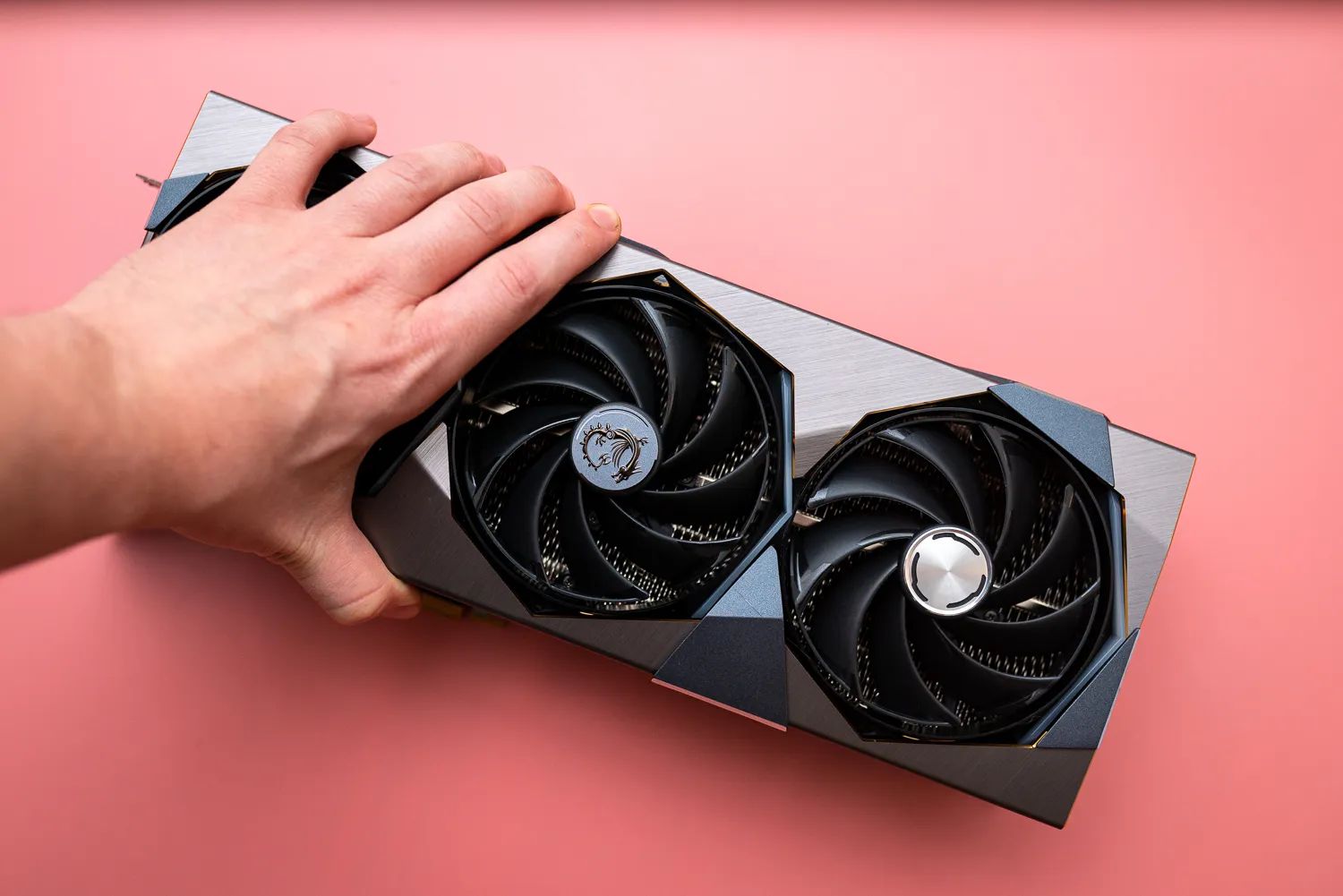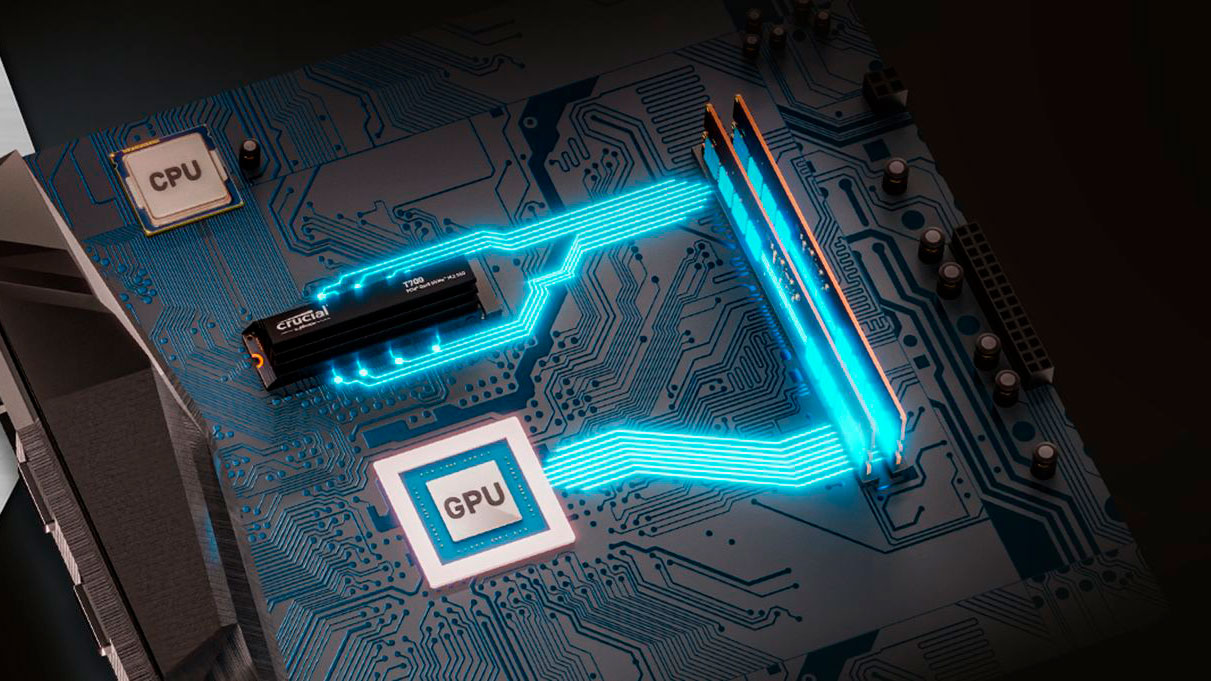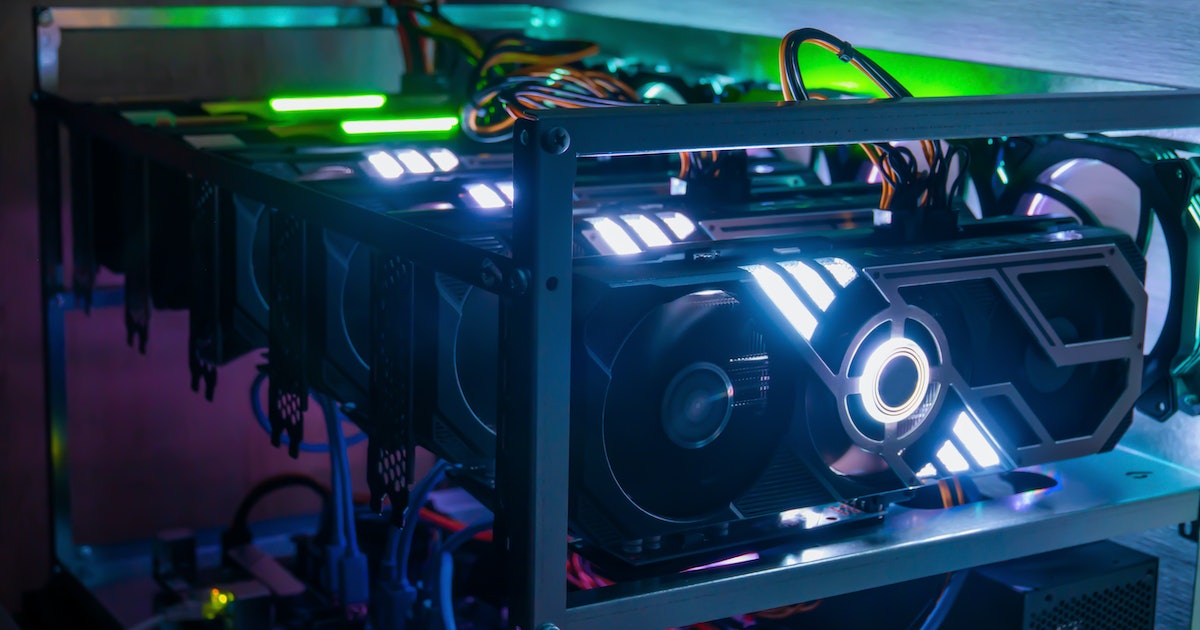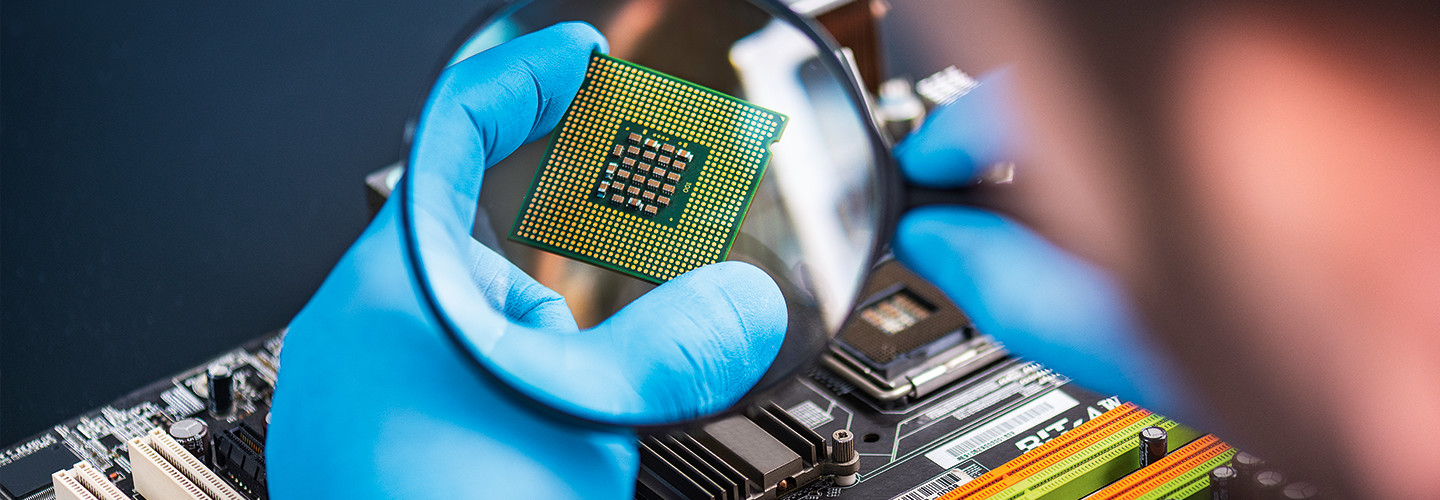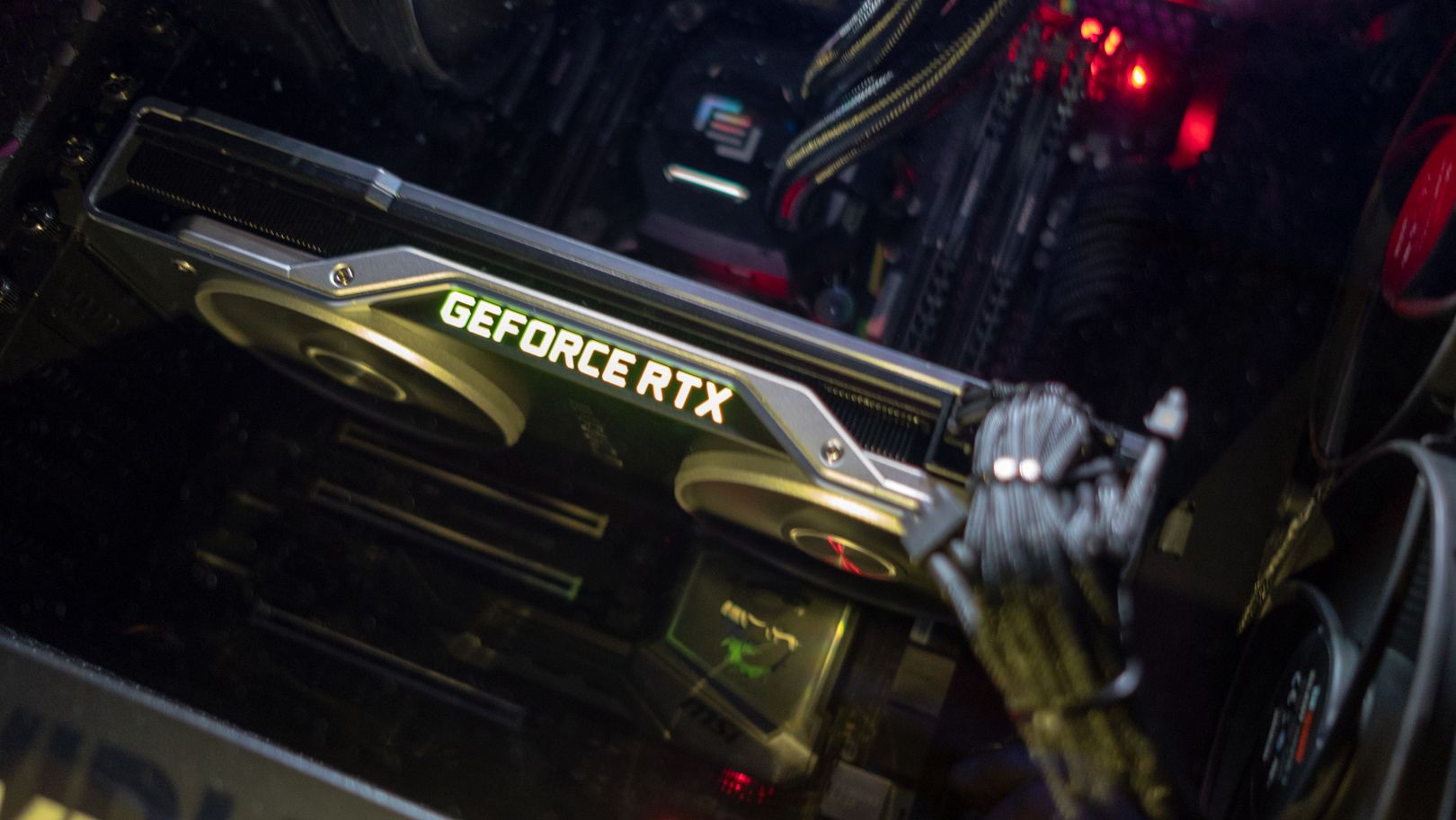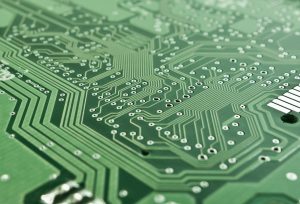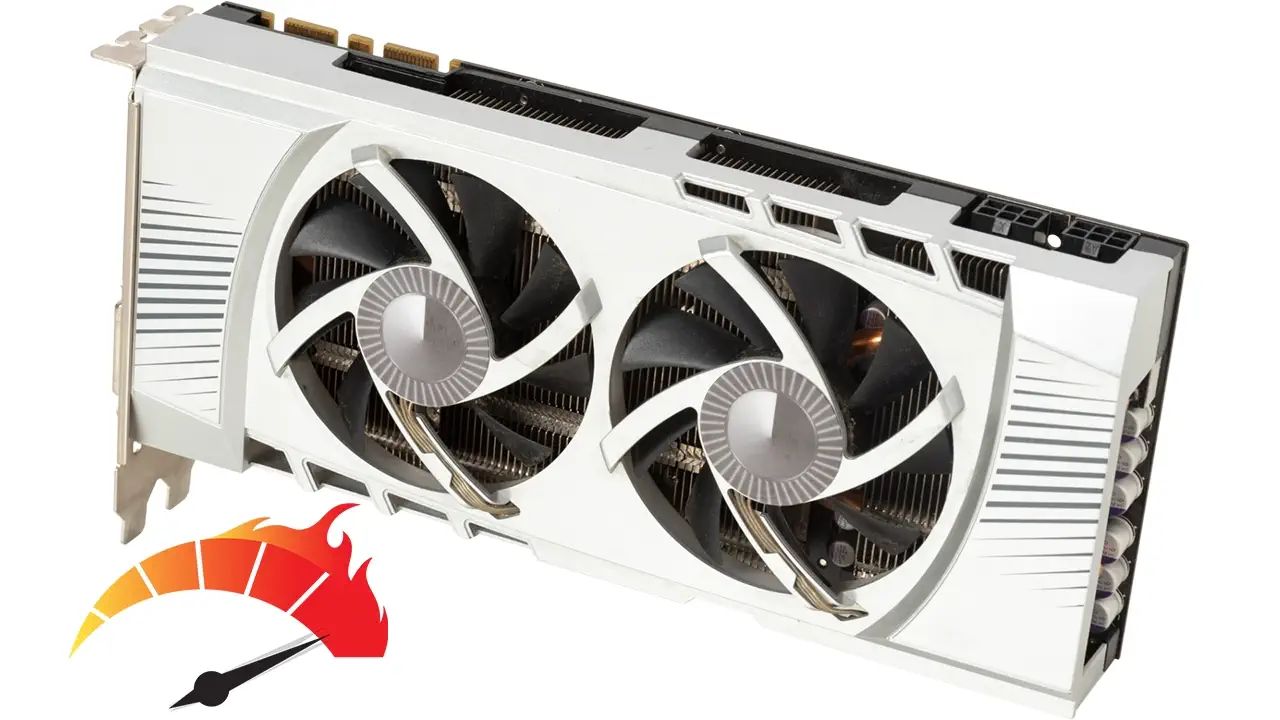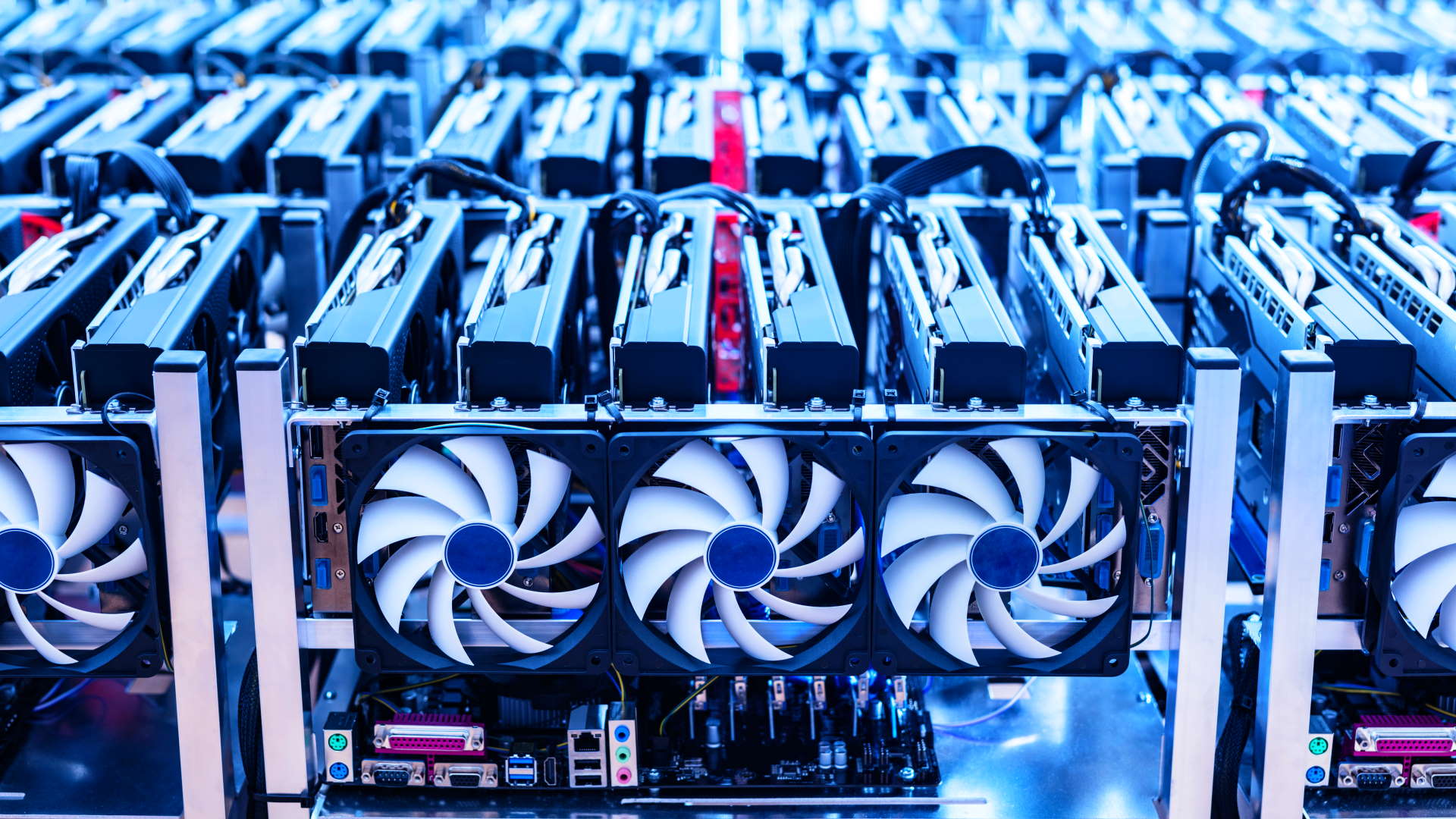Introduction
As a computer user, you may have encountered a situation in which your GPU (Graphics Processing Unit) is running at 100%, and you’re left wondering what could be causing this issue. Your GPU is responsible for rendering and displaying graphics on your computer screen, so having it running at maximum capacity for an extended period of time can be concerning.
When your GPU is running at 100%, it means that it is operating at its maximum capability, constantly working to keep up with the demands of the software or programs you are running. This can result in several issues, including reduced system performance, increased power consumption, and even potential system crashes.
Understanding why your GPU is running at full capacity is crucial in order to address the problem effectively. There can be several common reasons behind this occurrence, such as overheating issues, insufficient power supply, outdated drivers, incompatible software or programs, and hardware limitations.
If you’re currently facing this issue, don’t worry! In this article, we will explore these common reasons in detail and provide you with tips and solutions to fix your GPU running at 100%.
What does it mean when your GPU is running at 100%?
When your GPU is running at 100%, it means that it is operating at its maximum capacity, consistently utilizing all of its processing power to meet the demands of the tasks or applications you are running. This can result in an array of issues, affecting the overall performance and stability of your system.
Firstly, when your GPU is at full usage, it can lead to a significant drop in your system’s performance. Tasks that once ran smoothly may become sluggish, and you may experience lag or stuttering when playing graphic-intensive games or running graphic design software.
Besides performance issues, a GPU running at 100% for extended periods of time can also generate excessive heat, leading to overheating problems. Overheating not only affects the performance of your GPU but can also cause damage to other components of your computer, such as the CPU. Therefore, it is crucial to address this issue promptly to prevent any potential hardware damage.
Moreover, a GPU constantly running at its maximum capacity can consume a significant amount of power. This can result in increased power consumption, leading to higher electricity bills and putting unnecessary strain on your power supply unit.
Lastly, it’s important to note that if your GPU is running at 100% while idle or during light tasks, it may indicate an underlying problem. In such cases, the constant high GPU usage could be a symptom of a software issue, driver conflict, or even malware on your system.
Understanding the implications of a GPU running at 100% is crucial in order to take appropriate measures to resolve the issue. In the following sections, we will explore the common causes behind a GPU running at full capacity and provide you with practical solutions to fix this problem.
Common reasons why your GPU is running at 100%
There can be several factors contributing to your GPU running at 100%. Understanding these common reasons can help you identify the root cause and implement the necessary solutions.
1. Overheating issues: One of the most prevalent reasons for a GPU running at maximum capacity is overheating. When the temperature of the GPU rises beyond a certain threshold, it automatically ramps up its performance to cool down. This can lead to continuous high GPU usage. Overheating can occur due to insufficient cooling, dust accumulation in the system, or malfunctioning fans.
2. Insufficient power supply: GPUs require a sufficient power supply to operate optimally. If your power supply unit (PSU) doesn’t deliver enough power or is faulty, your GPU may run at maximum capacity to compensate for the insufficient power. Upgrading to a higher wattage PSU or ensuring that your current PSU is functioning properly can resolve this issue.
3. Outdated drivers: Outdated or incompatible graphics card drivers can cause your GPU to run at 100%. Updated drivers not only optimize performance but also fix existing bugs and improve compatibility with the software you are using. Regularly updating your graphics card drivers can help prevent this issue.
4. Incompatible software or programs: Certain software or programs can be poorly optimized or have compatibility issues with your GPU. This can result in your GPU working harder than necessary, leading to constant high usage. Ensuring that you are using the latest versions of software and checking for compatibility with your GPU can help resolve this issue.
5. Hardware limitations: In some cases, your GPU may be running at 100% due to hardware limitations. This can occur if you are running resource-intensive tasks on a low-end or outdated GPU. Upgrading to a more powerful graphics card can help alleviate this issue.
Identifying the specific reason behind your GPU running at 100% is crucial for effectively addressing the issue. In the following sections, we will discuss how to check GPU usage and provide practical solutions to resolve the problem.
Overheating issues
Overheating is a common culprit behind a GPU running at 100%. When the temperature of your GPU rises beyond its optimal range, it triggers a mechanism to increase fan speed and performance in an attempt to cool down. If your GPU is consistently running at maximum capacity due to overheating, it’s important to address this issue promptly to avoid potential damage to your hardware.
Several factors can contribute to overheating, including:
1. Insufficient cooling: Inadequate cooling within your system can impede the proper dissipation of heat from your GPU. It’s important to ensure that your computer case has proper ventilation and fans to maintain a steady flow of cool air. Additionally, if your GPU has its own cooling system, such as fans or cooling blocks, make sure they are clean and functioning correctly.
2. Dust accumulation: Dust accumulation can be a significant contributor to overheating. Over time, dust collects in your system and creates a barrier that restricts airflow, impeding the cooling process. Regularly cleaning your computer’s internal hardware, including fans and heatsinks, can help prevent overheating caused by dust buildup.
3. Malfunctioning fans: If the fans responsible for cooling your GPU are not functioning properly, it can lead to inadequate heat dissipation. Ensure that your fans are spinning smoothly and not making any unusual noises. If you notice any issues, consider replacing them to maintain proper cooling.
To address overheating issues and prevent your GPU from running at 100%, consider the following steps:
1. Improve airflow: Ensure that your computer case has proper ventilation and airflow. Keep your system in an open and well-ventilated area, away from heat sources. Consider installing additional fans or upgrading existing ones to improve cooling performance.
2. Clean your system: Regularly clean your computer’s internal components to remove dust and debris. Pay close attention to fans, heatsinks, and cooling systems. Use compressed air or a soft brush to gently remove dust without causing any damage.
3. Monitor temperatures: Use software tools or utilities to monitor your GPU’s temperature. This will help you identify if overheating is the cause of your GPU running at 100%. If temperatures consistently exceed safe limits, further action may be needed.
4. Apply thermal paste: If you’re comfortable working with computer hardware, consider reapplying thermal paste on your GPU. Over time, the thermal paste between the GPU and the heatsink may degrade, negatively impacting heat transfer. Applying fresh thermal paste can optimize cooling performance.
By addressing and resolving overheating issues, you can effectively prevent your GPU from constantly running at its maximum capacity and ensure optimal performance and longevity of your hardware.
Insufficient power supply
Another common reason for a GPU running at 100% is an insufficient power supply. Depending on the power requirements of your GPU and the overall energy demands of your system, a low-powered or faulty power supply unit (PSU) may struggle to provide the necessary power, causing your GPU to compensate by running at maximum capacity.
Here are a few factors to consider when examining the power supply as a potential cause:
1. Wattage: The wattage of your PSU needs to be sufficient to handle the power requirements of your GPU and other system components. If the PSU is underpowered, it may not be able to support your GPU, resulting in high GPU usage.
2. Multiple GPUs: If you have multiple GPUs in your system, the power supply needs to be capable of providing enough power to each GPU simultaneously. Insufficient power can force your GPUs to run at maximum capacity, straining the PSU even further.
3. Power supply quality: The quality of the power supply is equally important, as a faulty or low-quality PSU may not deliver consistent and stable power to the GPU. This can lead to unpredictable behavior, including high GPU usage.
Here are some steps you can take to address power supply-related issues:
1. Upgrade the power supply: If you suspect that your power supply is underpowered or inadequate, consider upgrading to a higher wattage PSU. Research the power requirements of your GPU and other system components to ensure you choose a compatible PSU.
2. Check the power supply connections: Ensure that all power cables and connections between the PSU and GPU are securely connected. Loose or improperly connected cables can cause power delivery issues, leading to high GPU usage.
3. Monitor power usage: Use software or hardware tools to monitor the power usage of your GPU and overall system. This can help identify if your GPU is running at maximum capacity due to insufficient power supply.
4. Test with a different power supply: If you have access to another power supply, you can test your GPU with it to rule out any issues with your current PSU. If the GPU usage decreases or becomes stable with a different power supply, it indicates an issue with your original PSU.
Addressing power supply issues is vital to ensure that your GPU operates within its intended power parameters. By ensuring that your GPU receives the appropriate power supply, you can prevent high GPU usage and maintain system stability.
Outdated drivers
Outdated drivers can often be a cause of a GPU running at 100%. Graphics card drivers play a critical role in enabling communication between your operating system and the GPU. If these drivers are outdated or incompatible, they can cause performance issues and result in your GPU constantly running at maximum capacity.
Here are some key points to consider when examining outdated drivers as a potential cause:
1. Performance optimization: GPU drivers are regularly updated by manufacturers to improve performance, stability, and compatibility with the latest software and games. Outdated drivers may lack these optimizations, leading to inefficient GPU usage and higher resource consumption.
2. Bug fixes: Updated drivers often include bug fixes for known issues. If you are using outdated GPU drivers, you may encounter software conflicts or compatibility problems that force your GPU to run at maximum capacity.
Here’s how you can address driver-related issues:
1. Check for driver updates: Visit the website of your GPU manufacturer (such as NVIDIA or AMD) and navigate to the support or drivers section. Look for the latest driver version available for your specific GPU model. Download and install the updated drivers following the manufacturer’s instructions.
2. Use driver update utilities: Alternatively, you can use driver update utilities that automatically scan your system and identify outdated drivers. These tools can streamline the driver update process and ensure that you have the latest drivers installed for your GPU.
3. Uninstall and reinstall drivers: If you’re experiencing persistent issues with outdated drivers, consider uninstalling the existing drivers completely and then reinstalling the latest version. This can help resolve any conflicts or corruption that may be affecting the performance of your GPU.
4. Enable automatic driver updates: To prevent driver-related issues in the future, enable automatic driver updates if your GPU manufacturer provides this option. Automatic updates ensure that you always have the latest drivers installed, minimizing the chances of compatibility or performance problems.
Updating your GPU drivers is a straightforward and effective solution to address high GPU usage caused by outdated drivers. By keeping your drivers up to date, you can enhance performance, resolve compatibility issues, and ensure that your GPU operates efficiently.
Incompatible software or programs
Incompatibility between your GPU and certain software or programs can also contribute to your GPU running at 100%. Some software may not be optimized to work efficiently with specific GPU models or driver versions, causing the GPU to work harder than necessary.
Consider the following factors when examining incompatible software or programs as a potential cause:
1. Non-optimized software: Some software or applications may not be well-optimized to utilize your GPU’s resources effectively. This can result in excessive GPU usage and poor performance.
2. Driver conflicts: Incompatible or conflicting GPU drivers can cause issues with certain software or programs. If the software requires specific driver versions that are incompatible with your GPU, it can lead to high GPU usage.
To address incompatibility issues with software or programs, take the following steps:
1. Update software: Ensure that you have the latest version of the software or program installed. Developers often release updates to address compatibility issues and improve performance. Check the software’s official website for any available updates and install them accordingly.
2. Check for GPU compatibility: Verify if the software or program you’re using is compatible with your GPU. The software’s documentation or the developer’s website may provide information regarding GPU compatibility. If your GPU is not listed as supported or compatible, consider alternative software that works well with your GPU.
3. Adjust software settings: Some software or programs may have settings related to GPU usage. Explore the software’s preferences or settings menu to see if there are options to adjust GPU utilization. Lowering the graphics settings or disabling certain GPU-intensive features may help reduce high GPU usage.
4. Resolve driver conflicts: If you suspect that driver conflicts are causing compatibility issues with certain software, consider either updating or rolling back your GPU drivers. This can help establish compatibility between the software and your GPU. Refer to your GPU manufacturer’s website for instructions on how to update or rollback drivers.
Addressing compatibility issues with software or programs can significantly reduce GPU usage and improve overall system performance. By ensuring that your software is optimized and compatible with your GPU, you can optimize resource utilization and enhance the efficiency of your GPU.
Hardware limitations
One of the common reasons for a GPU running at 100% is hardware limitations. This means that your GPU may not have enough processing power or resources to handle the demands of certain software or tasks, causing it to work at maximum capacity.
Consider the following factors when examining hardware limitations as a potential cause:
1. Low-end or outdated GPU: Older or lower-end GPUs may struggle to keep up with the requirements of modern, resource-intensive software. If you are running a graphics card that is not designed for high-performance tasks, such as gaming or graphic design, it may constantly run at maximum capacity.
2. Insufficient VRAM: Video RAM (VRAM) plays a crucial role in storing and accessing data required for rendering graphics on your screen. If your GPU has limited VRAM, it may not be able to handle large textures or high-resolution displays efficiently, leading to increased GPU usage.
3. System memory limitations: Insufficient system memory (RAM) can also contribute to high GPU usage. When your system memory is limited, your GPU may need to compensate by utilizing more of its own resources, resulting in higher GPU usage.
To address hardware limitations, you can consider the following steps:
1. Upgrade your GPU: If your GPU is outdated or low-end, consider upgrading to a more powerful one that can handle the demands of modern software. Research and choose a GPU that aligns with your specific needs and budget.
2. Increase VRAM: If your GPU supports it, consider increasing the amount of VRAM available. This can be done by upgrading to a graphics card with higher VRAM capacity or adjusting the VRAM allocation settings in your GPU’s control panel.
3. Add more system memory: Increasing system memory by adding more RAM can help alleviate the strain on your GPU. With more RAM, your system can handle tasks more efficiently, reducing the need for your GPU to constantly run at maximum capacity.
4. Optimize software settings: Adjusting the settings within software or games can help optimize GPU usage. Lowering graphical settings, disabling unnecessary effects, or reducing resolution can reduce the strain on your GPU, allowing it to run more efficiently.
While addressing hardware limitations may require a financial investment, it can significantly improve your system’s performance and prevent your GPU from constantly running at its maximum capacity.
How to check GPU usage
Checking your GPU usage can provide valuable insights into whether your GPU is running at 100% and help identify the cause of any performance issues. Fortunately, there are several methods available to monitor and determine GPU usage.
Here are a few ways to check GPU usage:
1. Task Manager (Windows): On Windows, you can use the Task Manager to check GPU usage. Right-click on the taskbar, select “Task Manager,” and navigate to the “Performance” tab. Under the GPU section, you will find real-time GPU usage information.
2. Activity Monitor (Mac): For Mac users, the Activity Monitor provides GPU usage information. Open the Activity Monitor from the Utilities folder, click on the “GPU” tab, and you can view GPU usage, GPU history, and other related statistics.
3. GPU monitoring software: Third-party GPU monitoring applications, such as MSI Afterburner, NVIDIA GeForce Experience, or AMD Radeon Software, offer more detailed GPU usage statistics. These tools allow you to monitor GPU temperature, usage, clock speeds, and fan speeds in real-time.
4. Benchmarking tools: Benchmarking software like FurMark or 3DMark not only test the performance of your GPU but also provide GPU usage information during the tests. This can help you gauge how your GPU performs under different loads.
By checking your GPU usage, you can accurately determine if it is running at 100%, diagnose potential issues, and identify any performance bottlenecks. This information is crucial when applying the appropriate solutions to optimize your GPU and improve system performance.
How to fix GPU running at 100%
If you find that your GPU is consistently running at 100%, it’s essential to address the issue to restore optimal performance and prevent any potential damage. Here are several effective solutions to fix a GPU running at maximum capacity:
1. Monitor and adjust power settings: Check your power settings to ensure that your GPU is not operating in a high-performance or overclocked mode unnecessarily. Adjust the power settings in your GPU’s control panel or software to a balanced or power-saving mode.
2. Clean and cool your system: Overheating can cause a GPU to run at maximum capacity. Clean your system to remove dust and debris that may impede airflow. Ensure that cooling components, such as fans and heatsinks, are functioning properly, and consider improving system ventilation or using additional cooling solutions.
3. Update graphics card drivers: Outdated or incompatible drivers can lead to high GPU usage. Visit the website of your GPU manufacturer and download the latest drivers for your specific GPU model. Regularly updating your drivers can optimize performance and resolve compatibility issues.
4. Optimize software and programs: Incompatible or poorly optimized software can strain your GPU. Update your software to the latest version to benefit from bug fixes and improved performance. Adjust graphics settings within software to reduce the GPU’s workload, such as lowering resolution or disabling unnecessary effects.
5. Upgrade hardware: If your GPU is outdated or underpowered, consider upgrading to a more capable model that can handle your computing needs. Additionally, increasing system memory or adding more VRAM can relieve the strain on your GPU.
6. Close unnecessary programs and processes: Running multiple programs simultaneously can burden your GPU. Close any unnecessary programs or processes running in the background to free up GPU resources and reduce usage.
7. Scan for malware and viruses: Malware or viruses can impact GPU usage by running unwanted processes in the background. Run a thorough scan with reliable antivirus software to detect and remove any malicious programs.
8. Reset overclocking settings: If you have overclocked your GPU, resetting it to default settings can help prevent excessive GPU usage caused by unstable overclocks. Ensure your GPU is running at its stock settings for stable performance.
By following these solutions, you can effectively address a GPU running at 100% and restore normal GPU usage. Remember to implement these solutions one at a time, testing the GPU usage after each step to identify the specific cause and solution that work best for your system.
Monitor and adjust power settings
Monitoring and adjusting power settings can help address a GPU running at 100% by ensuring that it operates efficiently and optimally. By managing the power settings, you can reduce unnecessary strain on the GPU and potentially lower its usage. Here’s how to monitor and adjust power settings:
1. GPU control panel: Most GPUs come with their own control panel software that allows you to adjust various settings. Access the control panel and look for power management options or performance profiles. Switching to a balanced or power-saving mode can reduce GPU power consumption, preventing it from running at maximum capacity unnecessarily.
2. Operating system power settings: Your computer’s operating system also offers power management settings. On Windows, go to the Control Panel or Settings and navigate to Power Options. Choose a power plan that aligns with your needs, such as Balanced or Power Saver. These plans can adjust CPU and GPU performance to conserve power.
3. Fan control: Adjusting the fan speed can help manage GPU temperatures, preventing overheating and excessive GPU usage. Depending on your GPU model, you may be able to adjust fan speed settings within your GPU’s control panel software. Consider setting the fan speed to a higher setting to improve cooling efficiency.
4. Undervolting: Undervolting the GPU involves reducing its voltage while maintaining stable performance. This can help lower power consumption and consequently reduce GPU usage. Undervolting options are typically available in GPU control panel software or through third-party applications specifically designed for undervolting.
5. Remove GPU overclocks: If you have manually overclocked your GPU, resetting it to its default clock speeds can help reduce GPU usage and potentially resolve instability issues. Overclocking increases a GPU’s power demands, so removing the overclock can alleviate strain and lower GPU utilization.
6. Monitor power consumption: Utilize software tools or utilities that provide real-time power consumption readings for your GPU. Monitoring the power usage can help you identify any spikes or excessive consumption, allowing you to make necessary adjustments to power settings.
By monitoring and adjusting power settings, you can optimize your GPU’s power consumption and reduce the likelihood of running at 100% capacity unnecessarily. Maintaining balanced power settings ensures that your GPU performs efficiently while also reducing energy consumption and heat generation.
Clean and cool your system
Keeping your system clean and properly cooled is crucial in preventing a GPU from running at 100% and maintaining optimal performance. Overheating can cause your GPU to work harder and potentially lead to performance issues or hardware damage. Here are some steps to clean and cool your system:
1. Remove dust and debris: Dust and debris can accumulate inside your system, blocking airflow and causing components to overheat. Use compressed air or a soft brush to carefully clean your computer case, paying close attention to fans, heatsinks, and vents.
2. Clean cooling components: Ensure that cooling components, such as fans and heatsinks, are free from dirt and dust. Gently clean them using compressed air or a brush to maintain efficient heat dissipation and prevent overheating.
3. Improve system ventilation: Ensure that your computer case has adequate ventilation. Clear any obstructions around your computer and provide proper space for air to circulate. Consider installing additional case fans or using liquid cooling solutions to enhance overall airflow and cooling efficiency.
4. Monitor and manage GPU temperatures: Use software tools or utilities to monitor the temperatures of your GPU. Keep an eye on the temperature readings to ensure that it stays within safe operating limits. If temperatures are consistently high, consider improving cooling within your system.
5. Adjust fan speeds: Some GPUs allow for manual adjustment of fan speeds. Increasing fan speeds can help improve cooling performance, ensuring that your GPU remains at optimal temperatures. Check your GPU’s control panel software or third-party applications to adjust fan speeds as necessary.
6. Consider aftermarket cooling solutions: If your GPU consistently runs hot despite cleaning and adjusting fan speeds, consider investing in aftermarket cooling solutions. Upgrading to a more efficient heatsink or installing liquid cooling systems can significantly improve cooling performance and lower GPU temperatures.
7. Monitor ambient temperature: Keep an eye on the ambient temperature in the room where your computer is located. High ambient temperatures can affect overall system temperatures. Ensure that the room is well-ventilated and consider using air conditioning or fans to maintain a cool environment.
By regularly cleaning and maintaining proper cooling in your system, you can effectively prevent overheating and reduce the likelihood of your GPU running at maximum capacity. A clean and cool system ensures optimal performance and longevity for your GPU and other components.
Update graphics card drivers
Outdated graphics card drivers can be a common cause of a GPU running at 100% or experiencing performance issues. Keeping your graphics card drivers up to date is essential to ensure compatibility, improve stability, and optimize performance. Here’s how to update your graphics card drivers:
1. Identify your graphics card: Determine the make and model of your graphics card. This information will be needed to download the correct drivers. You can usually find this information in the Device Manager or through the manufacturer’s software.
2. Visit the manufacturer’s website: Go to the official website of your graphics card manufacturer. Common manufacturers include NVIDIA, AMD, and Intel. Look for the Support or Drivers section on the website.
3. Choose the correct drivers: Locate the drivers section and search for the latest drivers available for your specific graphics card model and operating system. Be sure to choose the appropriate drivers, as using incorrect drivers can cause further issues.
4. Download and install the drivers: Download the latest drivers from the manufacturer’s website. Once downloaded, run the installation file and follow the on-screen instructions to install the drivers. It is recommended to choose the “Custom” installation option to perform a clean installation.
5. Reboot your system: After installing the new drivers, restart your system to ensure that the changes take effect. This will also help refresh the system and ensure that the new drivers are properly recognized.
6. Use driver update utilities: If manually updating drivers seems overwhelming, consider using driver update utilities. These tools automatically scan your system, identify outdated drivers, and download and install the latest versions.
7. Enable automatic driver updates: To ensure that your graphics card drivers stay up to date in the future, consider enabling automatic driver updates. This feature is often available through the graphics card manufacturer’s software or control panel.
By updating your graphics card drivers, you can resolve compatibility issues, improve stability, and optimize GPU performance. Regularly checking for driver updates and keeping them up to date is an essential maintenance task for maintaining the health and efficiency of your GPU.
Optimize software and programs
Optimizing software and programs can greatly help reduce GPU usage and address the issue of a GPU running at 100%. Some software may have settings that cause unnecessary strain on your GPU, while others may not be well-optimized for efficient resource utilization. Here are some steps you can take to optimize software and programs:
1. Update software: Ensure that you have the latest version of the software installed. Developers frequently release updates to improve performance, fix bugs, and enhance compatibility. Check the software’s official website or use built-in update mechanisms to install the latest updates.
2. Adjust graphics settings: Many software applications and games allow you to adjust graphics settings to find a balance between visual quality and performance. Lowering settings such as resolution, texture quality, or shadow details can significantly reduce GPU usage. Experiment with different settings to find the optimal balance for your system.
3. Disable unnecessary effects: Some software or programs may have visual effects that put a heavy load on your GPU. Disabling or minimizing these effects, such as motion blur or depth of field, can help reduce GPU usage without compromising the overall experience.
4. Close background programs: Running multiple programs simultaneously can burden your GPU. Close any unnecessary programs or processes running in the background to free up GPU resources and reduce usage. Task Manager (Windows) or Activity Monitor (Mac) can help identify resource-intensive background processes.
5. Optimize game settings: If you experience high GPU usage while playing games, be sure to optimize in-game settings. Many games provide predefined profiles or optimization guides to help you achieve the best balance between visuals and performance. Also, consider disabling unnecessary features such as anti-aliasing or dynamic shadows.
6. Check for GPU-specific optimizations: Some software or games have specific settings or features for certain GPUs. Check the software’s documentation or the developer’s website for any GPU-specific optimizations or performance tweaks. Applying these settings can enhance performance and reduce GPU usage.
7. Consider alternative software: If you find that a particular software consistently puts a heavy load on your GPU, consider exploring alternative software options that are more efficient or better optimized for your GPU. Look for software that has positive reviews regarding GPU performance and compatibility.
By optimizing software and programs, you can efficiently utilize GPU resources and reduce the strain on your GPU. Taking the time to adjust settings, update software, and explore alternatives when necessary will help improve overall system performance and alleviate GPU usage issues.
Upgrade hardware
When dealing with a GPU running at 100%, one potential solution is to upgrade your hardware. Upgrading certain components can provide your system with additional processing power, allowing your GPU to handle demanding tasks more efficiently. Here are some aspects to consider when upgrading hardware:
1. Graphics card: If your current GPU is outdated or underpowered, upgrading to a more capable graphics card can significantly improve performance. A more powerful GPU can handle graphics-intensive applications and games with ease, reducing the likelihood of your GPU running at maximum capacity.
2. System memory (RAM): Insufficient system memory can cause your GPU to work harder to compensate for limited resources. Upgrading your RAM can provide a boost in overall system performance and alleviate pressure on your GPU.
3. CPU: The CPU plays a critical role in system performance, as it handles many tasks alongside the GPU. If your CPU is outdated or underperforming, upgrading to a more powerful processor can balance the workload between the CPU and GPU, reducing strain on the GPU.
4. Power supply: Inadequate power supply can lead to instability and insufficient power delivery to your GPU, causing it to run at 100%. Upgrading to a higher wattage and efficient power supply can ensure stable power delivery and prevent power-related issues.
5. Cooling system: Insufficient cooling can cause your GPU to overheat, leading to increased usage and potential performance problems. Upgrading your cooling system, such as adding more fans or installing a liquid cooling solution, can help maintain optimal temperatures for your GPU.
Identifying the hardware upgrade that will yield the most significant improvement in system performance depends on your specific needs and budget. Consider consulting with a knowledgeable professional or doing thorough research to determine which components are the most appropriate to upgrade in your system.
Upgrading hardware can be a significant investment, but it can greatly enhance your system’s capabilities and address a GPU running at maximum capacity. With upgraded hardware, you can enjoy improved performance, reduced GPU usage, and a more efficient overall computing experience.
Conclusion
A GPU running at 100% can cause performance issues, increased power consumption, and potential hardware damage. Addressing this issue is crucial to restore optimal performance and maintain the stability of your system. By understanding the common reasons behind a GPU running at maximum capacity and implementing the suggested solutions, you can effectively resolve this problem.
Some common reasons for GPU running at 100% include overheating issues, insufficient power supply, outdated drivers, incompatible software or programs, and hardware limitations. Each of these factors requires specific actions to mitigate their impact.
Monitoring GPU usage, cleaning and cooling the system, updating graphics card drivers, optimizing software and programs, and upgrading hardware are all key steps in addressing a GPU running at 100%. Each solution is designed to maximize GPU efficiency, reduce strain on the system, and maintain a stable and smooth computing experience.
However, it’s important to note that the effectiveness of each solution may vary depending on your specific hardware configuration and software environment. Therefore, it’s recommended to apply these solutions one at a time and test the impact on GPU usage and overall performance to identify the most effective approach for your system.
Remember, proactive maintenance, including regular cleaning, monitoring temperatures, and keeping software up to date, is essential to prevent a GPU from consistently running at maximum capacity. Additionally, conducting periodic assessments of your system’s components and considering upgrades can ensure that your hardware keeps up with your computing needs.
By following these guidelines, you can troubleshoot and resolve the issue of your GPU running at 100%, optimizing its performance, extending its lifespan, and enjoying a more efficient computing experience overall.







